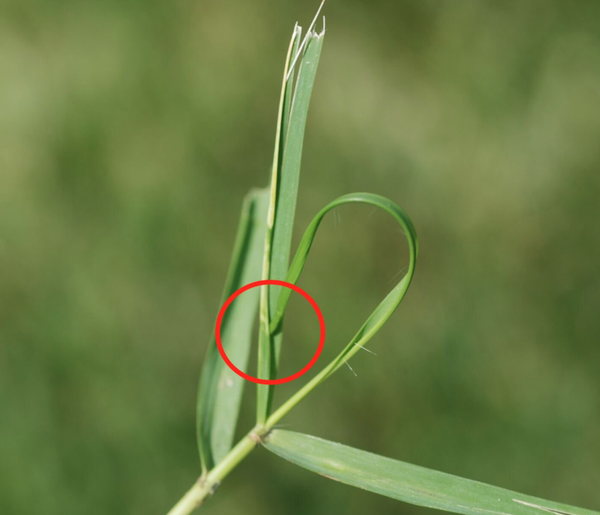Introduction
Zoysiagrass mites (Eriophyes zoysiae) are tiny, elongated (worm-like), white arachnids that are occasional pests of turfgrass. Very little information is available for zoysiagrass mites, particularly as pests in turfgrass, but some comparisons can be made with bermudagrass mites (Eriophyes cynodoniensis).
Pest Status
Susceptibility to mite attack will vary depending on turf variety. "Royal", "Emerald" and "El Toro" cultivars are somewhat resistant so damage should not be too severe. However, "Meyer" has shown to be highly susceptible (1).
Biology
Adult mites deposit eggs under the leaf sheath and can complete their entire life cycle within a week. Mites can produce a large number of offspring and can have many generations in a year so potential for rapid establishment and infestation is high.
Damage
Zoysiagrass mite damage is distinctive and can be easy to identify. Mite feeding causes the leaf to roll in on itself from one side (Fig. 1), protecting the mites underneath. As the leaf continues to roll, it can catch both older and newer growth, causing a large section of the plant to bend over creating an arch-like appearance. In larger plants, unrolling the leaf tissue will reveal yellow or white steaks from collar to tip. Damage is usually most severe in late spring/early summer.
Monitoring
It is almost impossible to observe zoysiagrass mites without the aid of a hand lens (2) so the best way to monitor for these pests is to look for plants exhibiting signs of damage - stunted growth with a rolled or "arched" apperance.
Control
Cultural Control
Making sure the turf is properly irrigated and applying lime and fertilizer applications according to soil test recommendations- be sure to get soil tested prior to making an application; excessive nitrogen levels are associated with increased mite damage.
Chemical Control
Chemical control options are generally not effective (5-10% control) and repeat applications are often necessary. Products containing abamectin or lambda-cyhalothrin have shown limited efficacy in insecticide trials with bermudagrass mites at Clemson University but only provide approximately 10% reduction of a mite population (3). If making an application, it is often recommended to combine with a fertilizer to improve appearance of the grass while reducing the mite population.
References
1. Bermudagrass and Zoysiagrass Mites. Oklahoma State Turfgrass Science Extension.
2. Zoysiagrass and Bermudagrass Mites. Kansas State University Research and Extension.
3. A Witch's Brew of Troubles with the Bermudagrass Mite. Clemson University.
Publication date: May 23, 2019
Reviewed/Revised: Feb. 28, 2024
N.C. Cooperative Extension prohibits discrimination and harassment regardless of age, color, disability, family and marital status, gender identity, national origin, political beliefs, race, religion, sex (including pregnancy), sexual orientation and veteran status.

